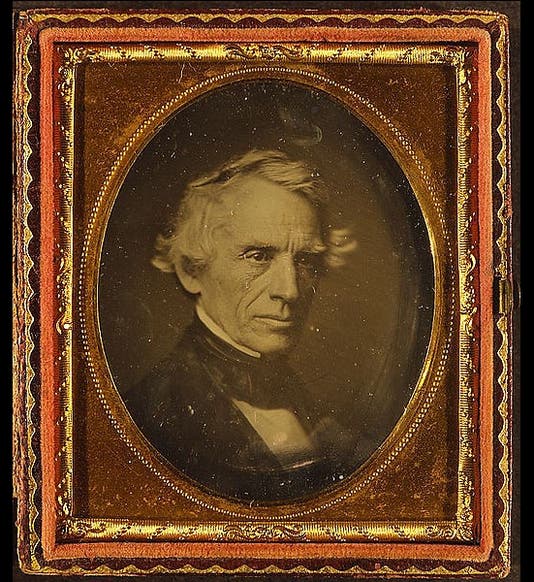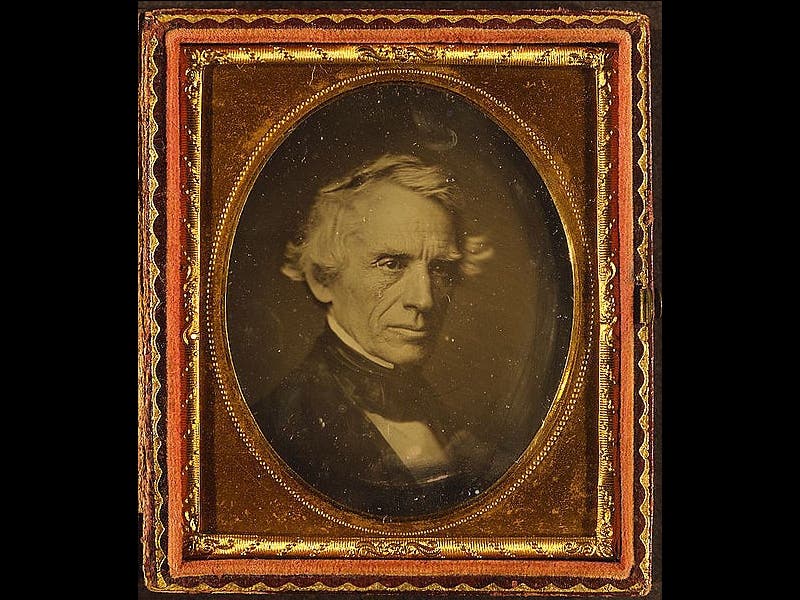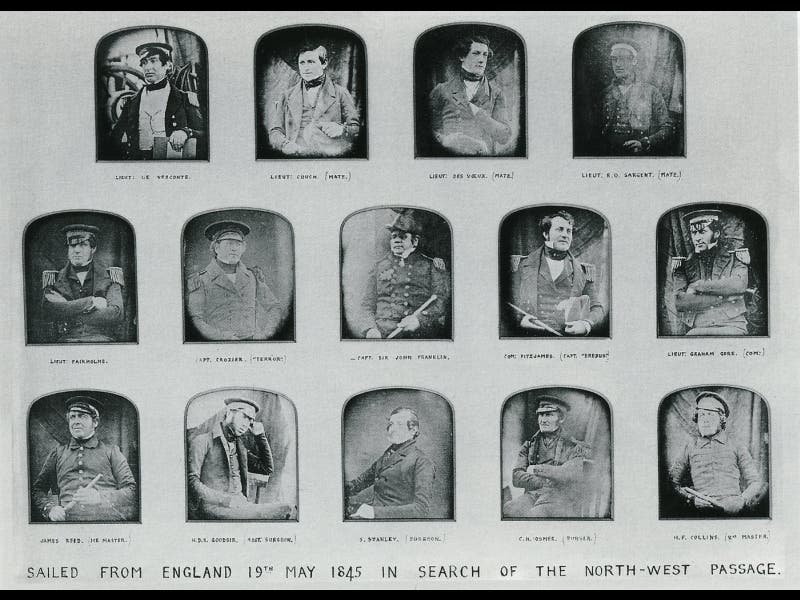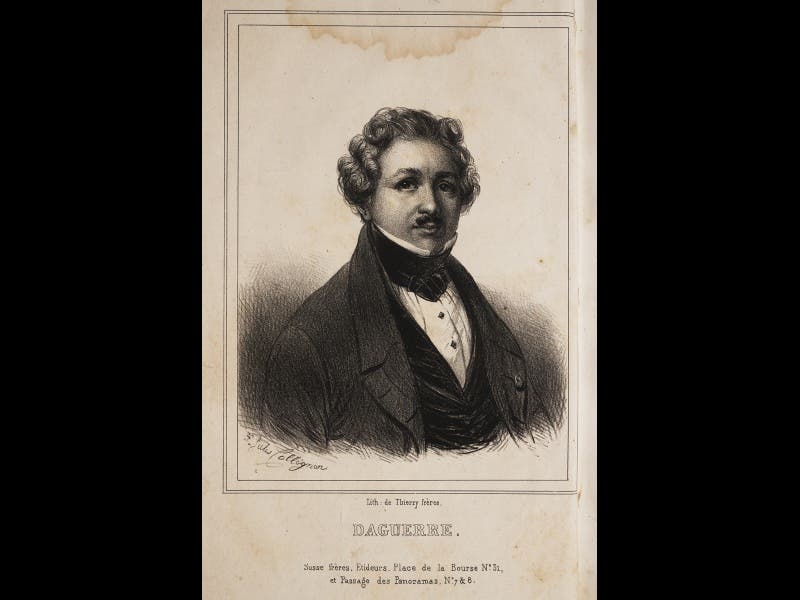Scientist of the Day - Louis Daguerre
Louis Daguerre, a French chemist, was born Nov. 18, 1787. Beginning in 1829, Daguerre began collaborating with Joseph Niépce, who had taken the first photographic images around 1825. After Niépce died in 1833, Daguerre continued his research with photo-sensitive chemicals, and he eventually developed a completely new process, which he called the daguerreotype process. This method of recording a photographic image uses light-sensitive silver halide particles, which, after exposure, are treated with mercury vapor, and then fixed with a soda solution. It is a one-time process, and no further prints can be made. The invention was announced at a meeting of the French Academy of Sciences on Jan. 7, 1839. Several weeks later, yet another technique, invented by Edward Fox Talbot, was announced to the Royal Institution in England. So the era of photography truly began in 1839.
A daguerrotype is a very delicate thing. It is actually a negative, but it is affixed to a mirror-like surface which makes the print appear positive. However, the image decays easily and cannot be touched, and the only surviving daguerreotypes have been kept in glass cases, usually with the air replaced by an inert gas. As a potpourri of early daguerreotypes related to science, we show you: a portrait of Samuel F.B. Morse (first image above); a view of the interior of the Academy of Natural Sciences in Philadelphia, taken in 1840—that is none other than Edgar Allen Poe on the right (second image), and a collection of daguerreotypes of the officers of the Franklin expedition, taken in 1845—sadly, none of these men came back (third image). The fourth image is a portrait of Daguerre that appeared as a frontispiece to his book on photography of 1839, and it is not a daguerreotype but a lithograph. We displayed this portrait in our recent exhibition on lithography, Crayon and Stone (2013).
Dr. William B. Ashworth, Jr., Consultant for the History of Science, Linda Hall Library and Associate Professor, Department of History, University of Missouri-Kansas City










